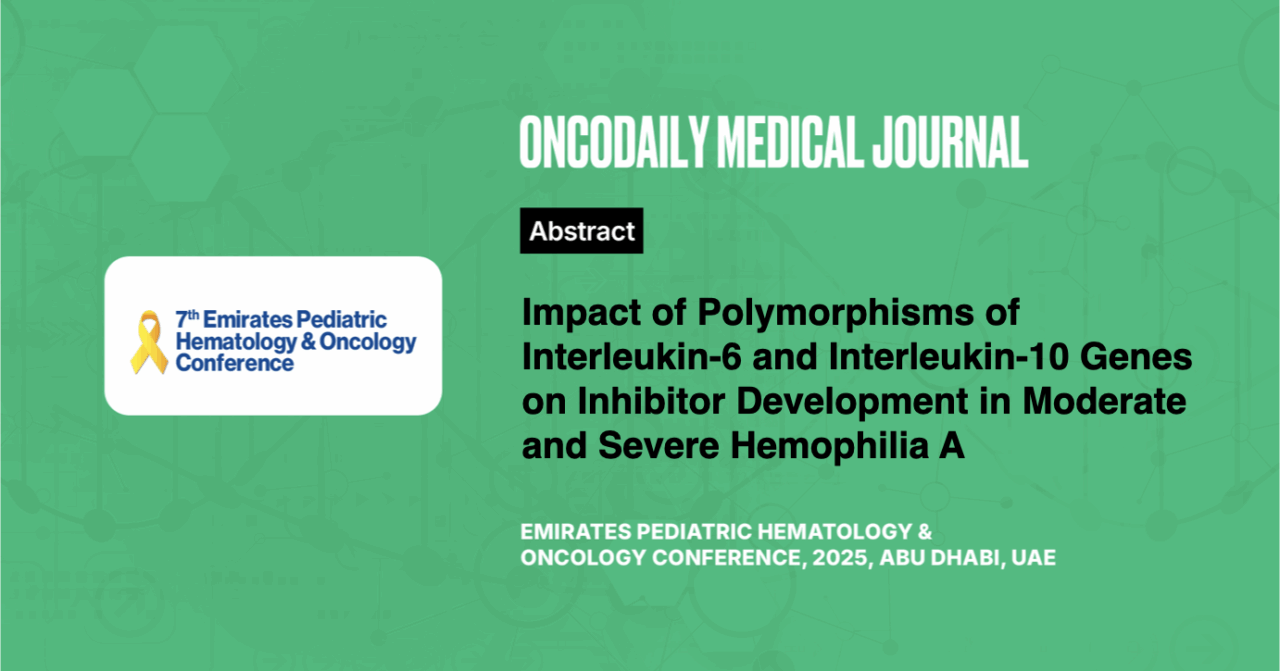Impact of Polymorphisms of Interleukin-6 and Interleukin-10 Genes on Inhibitor Development in Moderate and Severe Hemophilia A
Abstract
Introduction: Hemophilia A is an X-linked recessive bleeding disorder caused by the deficiency of factor VIII activity. Administration of factor VIII concentrates is used to treat bleeding. An important complication is the development of autoantibodies that block the activity of the factor (inhibitors). Polymorphisms of the immune response genes have been suggested to be determinants of the inhibitor risk. Previous studies have shown the implication of human leukocyte antigen (HLA) alleles and some of the cytokine polymorphisms in inhibitors formation such as IL-6 and IL-10.
The aim was to investigate the associations between interleukin-6 gene promotor polymorphism at position (-174 G/C), interleukin-10 gene promotor polymorphism at position (-1082G/A) and susceptibility of patients with Hemophilia A to develop factor VIII inhibitors
Methodology: After medical ethical committee approval, the present study was conducted on 50 moderate and severe hemophilia A children, males, ≤ 18 years who are attending hematology outpatient clinic of Alexandria University Children’s Hospital at El-Shatby. The 50 children were undergoing a) Detailed history taking, with special emphasis on: Age of the patient at the time of diagnosis, clotting activity of factor VIII, age at first exposure to factor VIII, type and dose of administered factor VIII concentrate. Exposure days (EDs), age at first surgical intervention , detection of factor VIII inhibitors b) Laboratory investigations: Identification of genetic variant IL-6 (rs1800795) , IL-10 (rs1800896) using real time PCR.
Results: Interleukin-6 gene promotor polymorphism at position (-174 G/C) , the frequency of G allele was greater than C allele in patients who developed inhibitors (0.63) with P value=1.000 . regarding interleukin-10 gene promotor polymorphism at position (-1082G/A), the frequency of G allele was greater than A allele in patients who developed inhibitors (0.75) with P value=0.891.
In the current study, we did not find a significant association between development of inhibitors and disease severity or treatment-related variables. However, the importance of therapy-related factors in inhibitor formation is a matter of a long standing debate. There is inconsistency in literature data which may be due to different genetic interactions in the studied populations, Several non-genetic factors, such as disease severity and therapy-related factors have been suggested as risk factors for inhibitor formation.
Conclusion: There was no statistically significant difference between interleukin-6 polymorphism at position (-174 G/C) , interleukin-10 polymorphism at position (-1082G/A) and development of factor VIII inhibitors in patients with hemophilia A despite of the high frequency of G allele among inhibitors corresponding to the previous studies done. Further studies are recommended with larger cohort and other SNPs.





